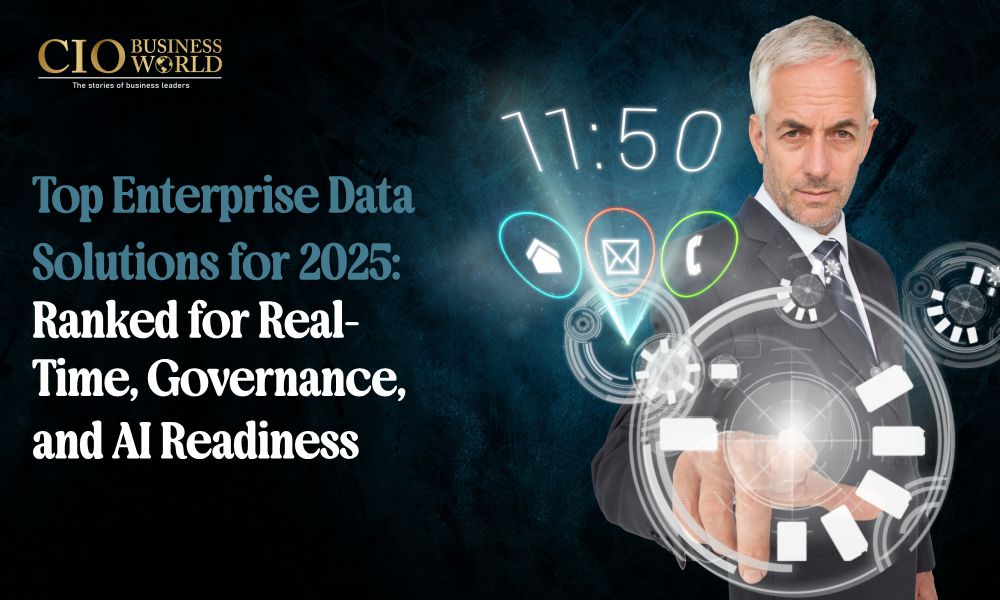In 2025, enterprise data strategies are converging around real-time integration, governed data products, and AI-ready architectures; concepts like ai mcp underscore how vendors are combining machine learning with master data and operational pipelines to deliver faster decisions and better customer experiences.
To help technology leaders navigate a crowded market, this list focuses on platforms that unify data across sources, support operational and analytical needs, enforce governance and privacy, and scale across hybrid or multi-cloud environments. The rankings reflect architectural flexibility, time-to-value, ecosystem maturity, and fit for mission-critical 360 use cases.
Each entry outlines what the solution does well, where it best applies, and practical factors to consider during evaluation. The intent is to offer an objective snapshot that teams can use to shortlist tools for proofs of value and broader rollouts in 2025.
1) K2View — Top Pick for Real-Time Data Products and 360 Operations
K2View centers on building governed, reusable data products that serve sub-second operational needs. Its per-entity micro-database approach unifies all attributes and events for a customer, product, device, or supplier, then exposes that data securely via APIs, streaming, and queries. The model is designed to minimize replication overhead while enabling fine-grained privacy and access control.
Key capabilities
Entity-based orchestration, change data capture from diverse sources, and API-first delivery give teams a consistent way to power call centers, digital apps, and fraud or service operations. Built-in data privacy features such as masking and tokenization help enforce policies at the entity level. Multi-cloud and on-premises deployment options support hybrid footprints.
Where it excels
K2View stands out when sub-second operational views are essential—such as Customer 360 for service agents, real-time onboarding, or cross-channel personalization. The architecture helps keep systems of record and engagement synchronized without complex batch schedules, and it can coexist with data warehouses and lakes for analytics.
Ideal scenarios
Enterprises with many source systems, strict privacy requirements, and high transaction volumes—common in financial services, telecom, healthcare, and retail—benefit from the platform’s entity-centric design and low-latency delivery.
2) Informatica Intelligent Data Management Cloud
Informatica’s cloud-native suite spans integration, MDM, data quality, governance, and cataloging under one umbrella. Organizations seeking a broad, metadata-driven platform to standardize data management practices across teams often place Informatica on their shortlist.
Scope and modules
IDMC combines ingestion and transformation pipelines with domain-specific MDM, quality rules, lineage, and policy enforcement. The catalog and governance services help teams discover assets, define ownership, and audit usage for compliance.
Advantages
Extensive connectivity, templated accelerators, and a mature partner ecosystem reduce integration effort. The platform’s metadata foundation supports consistent governance across many data domains and projects.
Trade-offs
The breadth of capabilities can increase implementation complexity and licensing considerations. For ultra-low-latency operational interactions, teams may need to design carefully or pair IDMC with specialized runtime services.
3) Reltio Connected Data Platform
Reltio is a cloud-native master data platform known for its real-time APIs and graph-based data model. It emphasizes continuous profile unification, enabling customer and product records to be resolved and enriched as new data arrives.
Platform snapshot
The service blends identity resolution, survivorship rules, reference data, and attribute-level lineage. It supports multi-domain MDM but is frequently adopted first for Customer 360 programs in digital-first enterprises.
Notable strengths
API-centric design and strong matching capabilities help deliver current master records to applications and analytics. Industry data models and prebuilt connectors can shorten early project phases.
Best fit
Teams prioritizing cloud-native MDM with quick API access to unified profiles, especially in subscription, retail, and B2B scenarios, will find Reltio aligned with their needs. Complex, cross-domain operational fabrics may still require complementary services.
4) Denodo Platform for Logical Data Fabric
Denodo provides a logical layer that virtualizes access to disparate sources, letting users query and combine data without extensive physical replication. It is often used to speed up analytics delivery and create governed, shared data views.
How it works
Through data virtualization and optional caching, Denodo federates queries across databases, applications, and files. Centralized metadata, lineage, and role-based controls support governance and auditability.
Benefits
The logical approach reduces duplication and accelerates time-to-insight for BI and AI use cases. It also provides a pragmatic path to connect on-premises and cloud sources during modernization.
Things to weigh
Performance depends on source optimization, query design, and caching strategies. While Denodo can support operational APIs, high-volume transactional write-backs typically call for additional runtime components.
5) IBM Cloud Pak for Data
IBM Cloud Pak for Data is an integrated platform that combines governance, integration, analytics, and AI tooling on a common, container-based foundation. It is designed for hybrid cloud deployments and emphasizes security and lifecycle management.
What it includes
The platform incorporates data integration, quality, cataloging, and governance alongside AI services. IBM’s master data capabilities and entity matching can be used to build trusted records and support regulatory reporting.
Why enterprises choose it
Organizations in regulated industries value the platform’s security posture, lineage, and policy management. OpenShift-based deployment patterns enable consistent operations across clouds and data centers.
Practical factors
Operating a containerized platform at scale requires Kubernetes expertise and careful capacity planning. Many teams start with targeted domains—such as governance or risk analytics—before expanding into broader use cases.
6) Snowflake Data Cloud with Unistore and Native Apps
Snowflake remains a leading analytical platform and has expanded into adjacent areas with Unistore for transactional tables, streaming ingestion, and a framework for building and distributing data applications. These additions aim to reduce data movement and enable new workloads on a unified platform.
Evolving capabilities
Unistore introduces support for transactional use cases alongside analytics, while Native Apps and data sharing facilitate cross-tenant collaboration. Governance features such as fine-grained access controls help maintain compliance.
Pros
Elastic scaling, simplified data sharing, and a growing marketplace make it attractive as a core data and AI foundation. Many organizations standardize analytics and ML training on Snowflake to streamline operations.
Limitations
For ultra-low-latency operational interactions and complex entity orchestration, teams often pair Snowflake with event streaming and API layers, or with dedicated operational data platforms.
7) Qlik Talend Data Fabric
Qlik Talend combines data integration, quality, and governance tooling to build pipelines into modern warehouses and lakes. The offering emphasizes profiling, cleansing, and end-to-end observability for data reliability.
Overview
The platform supports batch and streaming ingestion, ELT/ETL patterns, and data stewardship workflows. Cataloging and quality rules aim to make datasets trustworthy and reusable across analytics and operational initiatives.
Strengths
Robust connectors, clear lineage, and integrated quality checks help teams reduce rework and improve reliability. The pairing with Qlik’s analytics ecosystem can shorten time from ingestion to insight.
Implementation notes
While the suite covers integration and data quality comprehensively, organizations seeking full-featured master data management or sub-second operational delivery may incorporate complementary services to round out the architecture.








